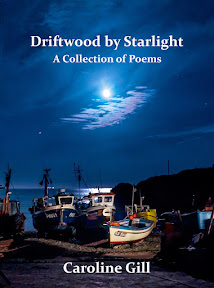 Right: Chough in Pembrokeshire (taken with a zoom lens).
Right: Chough in Pembrokeshire (taken with a zoom lens).
Copyright Caroline Gill 2008How many of you enjoy poems about birds? For some of us, our acquaintance with birds in poetry began with Edward Lear's splendid, if distinctly unconventional, owl in the pea-green boat. More recently I have fallen in love with some of the poems by Edward Thomas: his owl poem is particularly poignant.
If like me, you enjoy the flutter of feathers as you turn the pages of a poetry volume, I would thoroughly recommend
from the field book by Carol Thistlethwaite. The author speaks with authority when she writes about the 'slender hips' of the water rail and the 'straw-bent legs' of the avocet, for Carol has worked as a field teacher for the RSPB at the Ribble Discovery Centre.
from the field book is crammed, end to end, with the
jizz on birds. Meadow pipits are to be found alongside the red-legged partridge, and pied wagtails perch opposite the wren. There are occasional illustrations: I particularly like the Common Tern, with its simplicity of line. This bird pops up again on the cover, but you will need to look carefully to spot it!
snipe is a concrete poem: it literally covers the page.
black-headed gulls, another concrete poem, is playful in tone. Poems of all shapes and sizes flit across the pages and somehow manage to fit between the covers of this delightful volume.
The final poems encompass the theme of darkness: we encounter the striking image in
Barn Owl of the
'phantom with the weight of life hooked in its claws'. This creature could hardly bear less resemblance to his benign cousin, the 'elegant fowl', who sang to his 'small guitar'!
If you would like to experience the
jizz for yourself, you might like to buy the book!
























